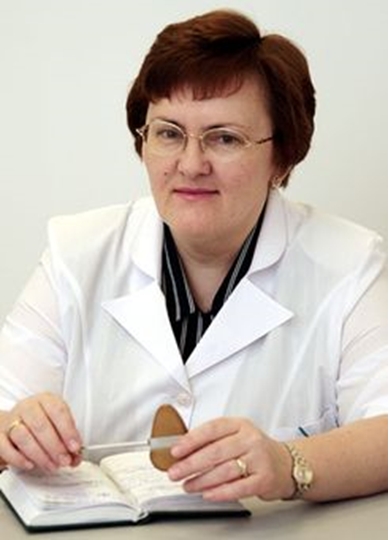Aesthetic procedures for the correction of the periorbital region are in great demand in the practice of aesthetic medicine specialists. Often, patients turn to eliminate facial wrinkles, dark circles and bags under the eyes, as well as to lift the eyebrows. However, doctors often encounter such a condition as blepharospasm.
In the framework of the VIII International Training Course for Cosmetologists IECTC, a report on the topic "Spasm of the circular muscle from the point of view of a cosmetologist and a neurologist" presented by Doctor of Medical Sciences, Professor of Moscow State Medical University. I. M. Sechenov and RNIMU them. N. I. Pirogova, President of the Interregional Public Organization of Botulinum Therapy Specialists (MOOSBT), Director of the Central Institute of Botulinum Therapy and Actual Neurology (CIBiAN) Olga Orlova. estet-portal.com acts as a media partner of the training. Read all the most important details of Dr. Orlova's report right now.
The problem of blepharospasm in the practice of aesthetic medicine specialists

The problem of blepharospasm is often encountered by aesthetic medicine specialists in their daily practice. Spasm of the orbicular muscle of the eye is a type of facial spasm, and is characterized by uncontrolled contraction of the orbicular muscle.
The main manifestation of blepharospasm is intense closure of the eyelids, however, at the beginning of the development of the pathological process, spasm may not be observed.
In this case, other symptoms of blepharospasm come to the fore, such as increased blinking, sensory disturbances, and even individual twitching of the eyelids. A specialist in aesthetic medicine should definitely pay attention to these symptoms and suspect the development of blepharospasm in his patient.
Spasm of the orbicular muscle of the eye:
• seven major segments of hyperactivity of the orbicular muscle of the eye;
• the role of blepharospasm in the practice of aesthetic medicine specialists;
• characteristic clinical symptoms of blepharospasm: early signs.
Seven major segments of orbicularis muscle hyperactivity
According to the classification of the ophthalmologist and plastic surgeon Vasily Atamanov, there are 7 segments of hyperactivity of the orbicular muscle of the eye. Upper outer, middle outer and lower outer – these are the outer segments that are mainly injected in aesthetic practice. The lower horizontal segment, which is located under the eyelid, is rarely injected, since swelling can occur in this area as a result of injections. To prevent this condition, a skin stretch test is sometimes done. If, after stretching, it returns to its previous position – microdoses of the drug can be injected into the lower horizontal segment. Internal segments are always very functionally significant. Lower inner segment – This is the corner of the eye where the lacrimal punctum is located. Injections into this area can cause excessive tear production, but it's not as bad as dry eyes. The upper inner and upper vertical segments are almost never injected in aesthetic practice, and even very rarely injected in neurological practice, because this is a high-risk area for developing upper eyelid ptosis.
The role of blepharospasm in the practice of aesthetic medicine specialists
Blepharospasm – this is a focal form of muscular dystonia, which is manifested by a violation of the ability to keep the eyes open. The eyes of a patient with blepharospasm tend to close and squint, and this happens very often during the day.
It is wrong to assume that blepharospasm – this is exclusively the prerogative of neurologists.
Half of the cosmetologists deal with patients who have initial or even advanced manifestations of blepharospasm, because at the beginning blepharospasm is manifested by rapid blinking, and then spasm. The main muscle that participates in & nbsp; blepharospasm – is the orbicular muscle of the eye. But this is not the only muscle, because almost all the muscles of the middle part of the face that border on the orbicular muscle of the eye, including the interbrow muscles and the muscles of the cheek, are involved in blepharospasm, and can become targets for beautician injections.
Read also: The effect of scleroderma on the effect of botulinum therapy in blepharospasm

Characteristic clinical symptoms of blepharospasm: early signs
Blepharospasm can debut within months or even years. And sometimes its first symptoms – this is just not a motor disorder, and not a spasm, but & nbsp; sensory manifestations. For several years, the patient may complain of a feeling of irritation of the skin and mucous membranes, a feeling of pain and heaviness in the eye area, a feeling of sand and burning in the eyes, discomfort and a feeling of subjective weakness. These symptoms must be paid attention to, since they may be the first signal of incipient blepharospasm. The clinical patterns of blepharospasm are also different. Most often, in the advanced stage of spasm, squinting of the eyes is observed. But there may also be symptoms such as drooping of the eyelids, frequent, short-term, rhythmic spasms, increased blinking, and occasional twitching of the eyelids.
Recall that estet-portal.com is a media partner of the VIII International Training Course for Cosmetologists IECTC. Follow our updates!
Read also: Diagnosis and treatment of focal muscular dystonia









Add a comment